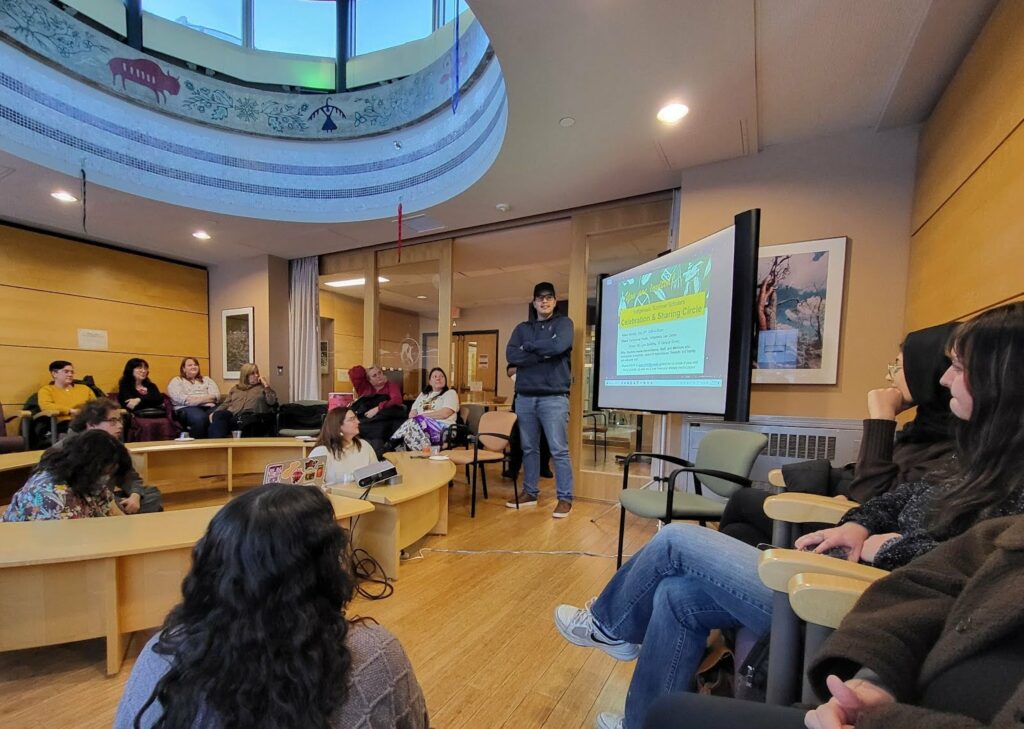The minerals industry does not stand still; it is always moving, changing and improving. With this ever-changing landscape, educational institutions must constantly update their methods and curriculums to educate students on advanced, emerging processes and technologies.
We were pleased to chat with a few representatives from our organization and others to provide insights into how education is keeping up with the minerals industry.
Read on for insights from Kunle Adelakun, Mining Engineering Technology Instructor at Saskatchewan Polytechnic, Sandy Bonny, Team Lead for Indigenous Student Achievement Pathways (ISAP) STEM Pathways for the University of Saskatchewan, and Al Shpyth, Executive Director of the International Minerals Innovation Institute (IMII).
Innovative Practices in Mining Education
As the minerals industry evolves, students must be equipped with the tools they need to succeed. This includes practical skill development on the innovative technologies that are becoming industry standards.
One exciting adoption within the Saskatchewan Polytechnic Mining Engineering Technology program was the purchase of robotic MS60 Multistation survey equipment. The program invested in this equipment to ensure their students gained hands-on experience with this cutting-edge, industry-standard surveying tool. This experience gave students a crucial foundation for comparing traditional and automated equipment.
The USask ISAP STEM+ program, funded by IMII, is a combined academic and co-curricular initiative providing various educational pathways for First Nations, Métis and Inuit students. *Read more about the program in this USask article.
The leaders of the ISAP program understand that the mining industry will need a diverse workforce to address the challenges and opportunities to come. This includes professions outside engineering and earth sciences like health sciences, environmental sciences, computational sciences, and more.
The ISAP STEM+ program aims to break down the barriers Indigenous students face and provide our minerals industry with diverse, innovative professionals.
IMII supports educational initiatives and programs, striving to integrate innovative practices that reflect the industry and prepare students. Our team is most interested in supporting:
- Artificial intelligence (AI) and machine learning (ML)
- Augmented/virtual reality
- Data analytics and problem-solving
- Digitization and automation
- Essential and soft skills
- Health and safety
- Micro-credentials
- Operations
- STEM (science, technology, engineering, math)

*Cameco employee working in Cameco mine
Industry and Education Collaboration
Partnerships between industry organizations allow educational institutions to ensure they’re updating their curriculums and methods to stay relevant and effective.
At Saskatchewan Polytechnic, they keep their programs updated in several ways:
- Program Advisory Committees (PACs) made of ~700 experts (with 8-14 industry experts) to monitor the direction of labour markets and the skills their students will need to succeed. Most of the major mineral companies in Saskatchewan are represented within the Mining Engineering Technology Program PAC.
- Alumni presentations to share what’s happening in the field. They often present the technologies and software they’re using to help inform Sask Polytech’s future purchases for the program.
- Mine tours so students can see current practices in the industry.
The University of Saskatchewan ISAP program sees its role as a bridge between K-12 STEM preparation and career engagement. They identify the following as important initiatives for ensuring curriculums stay relevant as the industry changes:
- Helping students build adaptive digital literacy and critical thinking skills.
- Utilizing open educational resources that can be easily updated.
- Introducing Energy and Minerals students to AI-informed dataset analysis, open geospatial resources, and digital tools for 2D and 3D mapping.
- Connecting digital resources with firsthand experiential learning
IMII has identified two priorities for mining post-secondary education and training:
- Create new pathways for young people outside of school to enter the industry.
- Create new pathways for meeting high-demand occupations.
In addition, IMII will collaborate with our post-secondary member partners on innovative solutions to bring training to students who live in rural, remote and reserve areas.
Virtual and Augmented Reality in Mining Education
As the industry embraces innovative technologies, educational institutions are embracing these technologies to prepare their students for successful careers.
Virtual reality (VR) has been a huge asset at Saskatchewan Polytechnic. VR takes instruction from theoretical explanations and videos to actual visualization of underground environments. With VR, students learn how to perform specific tasks and about the important regulatory aspects of their field. For example, before ‘going underground’ with VR, students must use safety gear and a tag board system to account for workers during emergencies.
IMII has proudly supported the integration of virtual reality into two educational programs:
- Morris Interactive’s Digital Transformation in Potash Mining (more here).
- The development of Saskatchewan Polytechnic’s virtual mine lab in the Mining Engineering Technology diploma program (more here).
With VR and Augmented Reality (AR), students can engage in hands-on learning while remaining safe, bridging the gap between theory and practice.

*A cohort of Morris Interactive’s Digital Transformation in Mining Potash program
Research and Internships in Mining Education
R&D is vital for keeping the minerals industry evolving and effective. At the educational level, research allows students to use their problem-solving skills and connect with the industry.
At Saskatchewan Polytechnic, students have the option to participate in applied research projects. And, Mining Engineering Technology students must complete a capstone project, giving them a taste of their future careers.
The University of Saskatchewan believes research projects and internships build risk tolerance and career readiness in students preparing to join the workforce. They enjoy ongoing partnerships with alumni, the Natural Sciences and Engineering Research Council of Canada and Mitacs that support academic-industry research projects. In addition, the ISAP program encourages and supports students as they apply for internship opportunities. Read success stories from Indigenous students interested in legal hacking, biology and environmental biology who utilized the ISAP program to achieve their goals.
Images from the 2024 STEM+ summer internship wrap-up
Education is the foundation of a strong minerals industry. We thank our educational institutions for their hard work and dedication to providing exemplary opportunities for our students.







